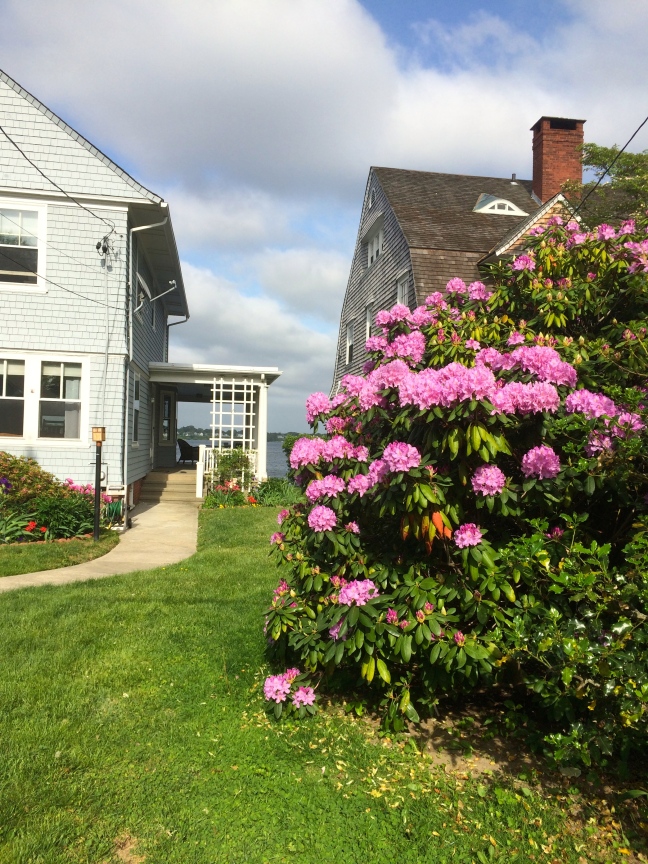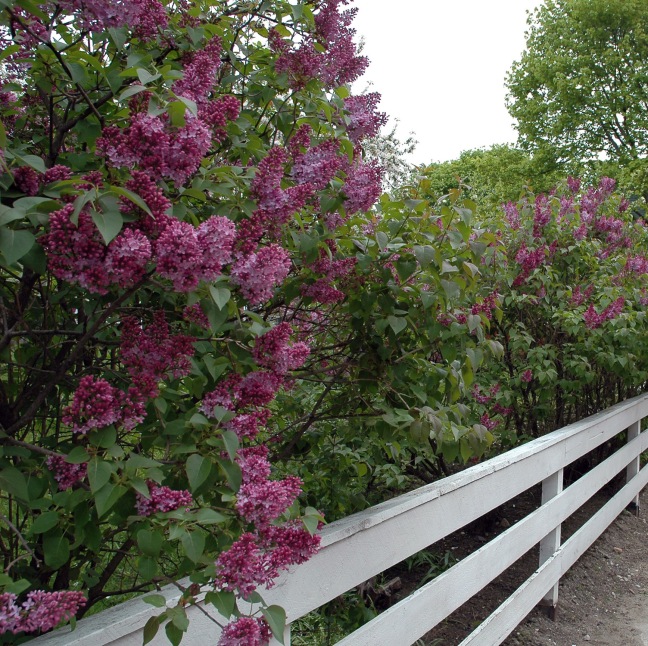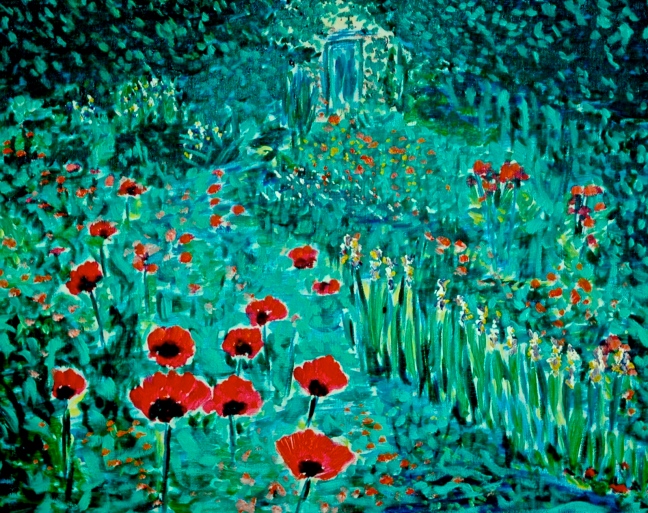
I recently attended the opening reception for Rhode Island artist Nancy E. Custin at DeBlois Gallery in Middletown RI. My favorite of her paintings, “Hillside of Rugosa’s at Gooseberry” (oil on canvas), beautifully captures a Rhode Island beach landscape in Newport.
Inspired by this painting and the summer weather, we (the West Bay Poets’ Collaborative) recently examined treasures collected from the beach: jars filled with sand, ocean water and seaweed; shells; rocks; plants; and our own memories. We talked out and wrote down our observations.
Then we listened to the poem “Sunset” by Chinese Tung Dynasty poet Tu Fu (713-770), marveling that a poet from a culture so extremely foreign to us, writing more than 12 centuries ago, could speak so deeply to our own experiences.
Finally, we worked to pattern our poem after Tu Fu. We organized our observations into a series of images related to the title, then ended with a feeling of wonder, phrased as a question.
Here’s what we came up with.
Beaches
Beaches award relaxation and peace.
Sea shells float in tides.
We ride the waves, search for sea glass.
Ocean whoosh-shush-shushes, rocks
us like a lullaby. Gold-gray
granite shimmers in the sunlight.
Seaweed billows like sheets on a clothesline.
Bathing suits and beach towels, purple sunset,
radios, sea grass, suntans–
a kaleidoscope of color.
Who knew a cool breeze could carry
all your worries away?
*********
I originally started this blog to help me process and muse through the novel I’m working on. I thought it would be a creative place to dig into the character and motivation of Lena, a landscape designer. But I’m finding this blog is becoming something else entirely.
The wee problem is: I don’t have a clue what this blog is becoming. !!
*********
Oh, well, what does it matter? It’s July in Rhode Island, and I’ve been spending every available spare minute at the beach, enjoying the cool breezes. (I am, however, also making good progress on my novel–it’s just that this blog isn’t in the least bit useful to me for that!) The Beach, and The Creative Process (whether I’m writing, crafting, cooking or sewing), carry my cares away.
Where do you go, or what do you do, when you need someone or something to carry all your worries away?

















